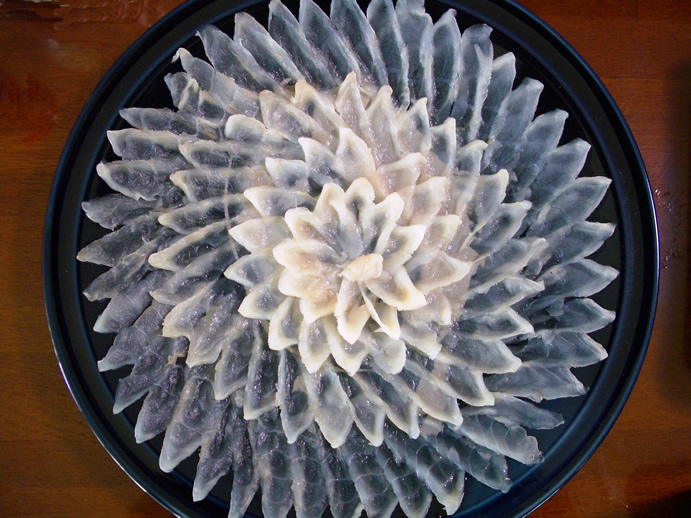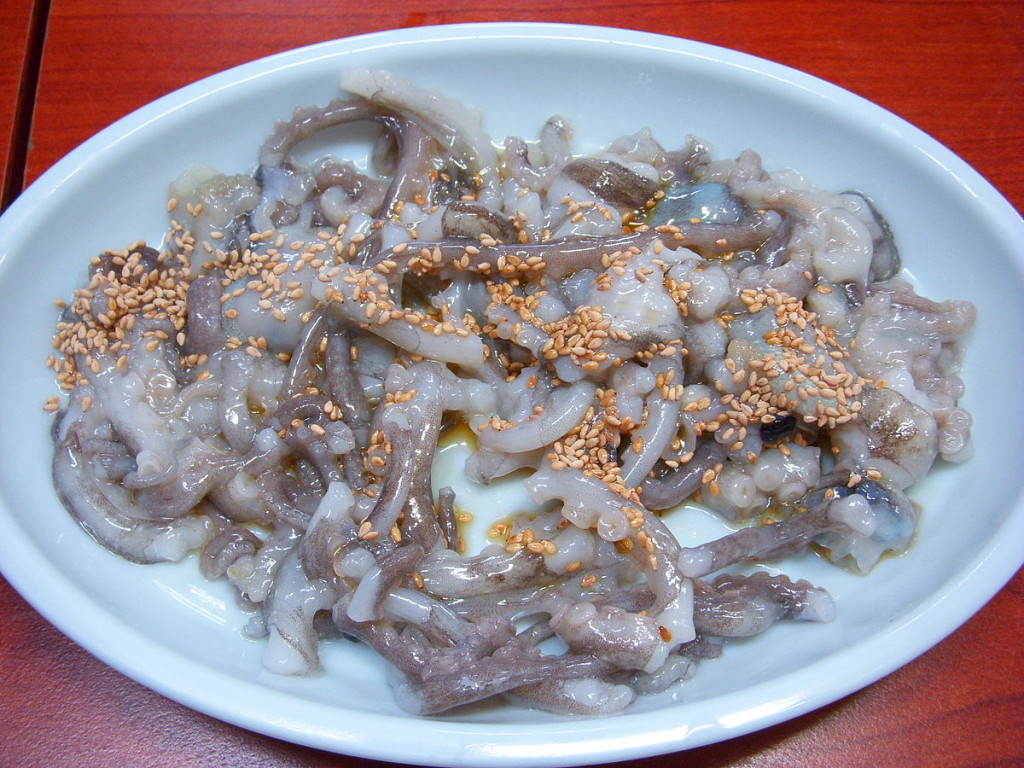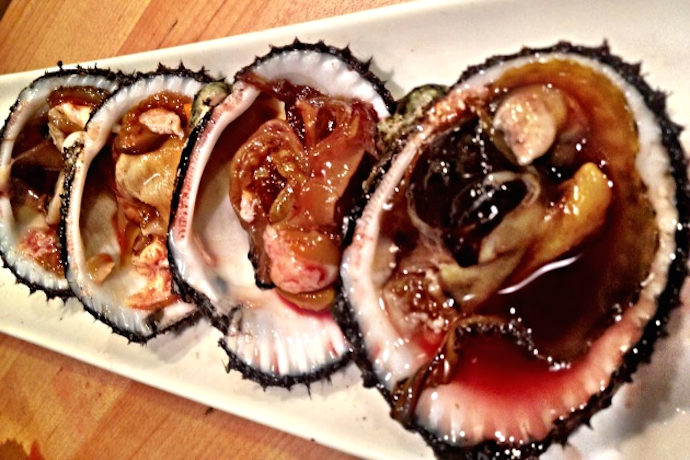These delicacies are delicious, but deadly. Their ability to kill you adds is a part of their appeal. Most of them have a safe way—not fully guaranteed—to be consumed. Who needs extreme-sports or casinos when you can gamble with these culinary dangers? Gamble with your life that is.
Fugu

Photo courtesy of Saguri F/Wikipedia.com
Otherwise known as “puffer fish,” it is the star of a specialty dish in Japan—one that might just be your last. Usually served raw as sashimi, expert fugu chefs make sure to leave just enough poison on the flesh to leave tongues tingly and pleasantly numbed after the meal. The almost paper-thin slices of toxic flesh are arranged into a beautiful flower as shown above. Beauty is deadly.
Sannakji

Photo courtesy of LWYang/Flickr.com
A Korean dish of raw baby octopus, which is chopped into bite-sized pieces and served frugally with sesame oil and sesame seeds. There’s nothing poisonous about this dish. Just beware of the suckers on those things. If you don’t chew well enough before swallowing, the tentacle might just decide to suction onto your esophagus while you’re trying to swallow. That’s not such a good idea when you’re trying to breathe.
Apricot Kernel

Photo courtesy of Tom Francis/Flickr
Once thought to be a possible treatment for cancer, apricot kernel was found to contain a toxic chemical in the seed that the body converts to cyanide. Possibility of death by cyanide poisoning? I wouldn’t call this the safest food. Goodbye potential cancer prevention.
Blood Clams

Photo courtesy of Kitchit
A delicacy—one of the more delicious ones apparently—of China. The clam meat sits in the crimson juices befitting of its name. The only preparation provided is a quick boiling of the clams and—voilà—they’re served. Oh, and just so you know, the quick-boiling doesn’t get rid of the myriad of viruses and bacteria present: hepatitis A, hepatitis E, typhoid, and dysentery.
Hákarl

Photo courtesy of Audrey/Flickr
Hákarl is an Icelandic dish of fermented Greenland shark. Looks relatively innocuous, but with its ammonia-y smell and fishy taste, it’s an acquired taste. In other words, it’s disgusting. Not to mention the poisonous flesh of the Greenland shark makes it a particularly off-putting dish.

